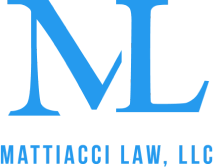How to Win Your Personal Injury Case in Philadelphia

Winning a personal injury claim requires plaintiffs to prove that the defendant(s) breached a legally recognized duty of care and harmed them in the process. Accordingly, personal injury attorneys build cases by gathering evidence to prove the defendant(s) negligence and the damages that resulted. Typically, the plaintiff’s attorneys compile this evidence during the discovery phase of litigation.
During discovery, a personal injury lawyer compels the other side to share its evidence, including proof beneficial to the plaintiff. In addition, personal injury lawyers interview witnesses, review official reports, consult experts, and seek other evidence to strengthen the claim, such as surveillance video of the incident.
Once a personal injury lawyer has substantial evidence, the defense becomes more amenable to settling for an attractive figure. Insurance companies must pay hefty legal fees to defend a case at trial. Once they know they are likely to lose, they tend to settle before the trial date.
Winning your personal injury case requires developing evidence proving four key elements.
Proving the Four Key Elements in Philadelphia
In a personal injury case, the plaintiff bears the burden of proof. He or she must present evidence that proves the four key elements of a personal injury case:
- The defendant (s) have a duty of care
- The defendant(s) breached that duty of care
- The defendant(s) breach caused harm to the plaintiff
- The defendant(s) damages related to the proven harm
Though the plaintiff must prove all four elements to prevail, the burden of proof in a personal injury case is a preponderance of the evidence rather than the far higher reasonable doubt burden that applies in criminal cases.
When reasonable doubt binds a judge or jury, they must firmly believe the prosecutor’s version of events. If a reasonable doubt exists, the defendant is entitled to an acquittal, even if the judge or jury thinks he is guilty. Thinking someone is guilty is not the same as proof. When a reasonable doubt exists, they must acquit the defendant.
A preponderance of the evidence means more likely than not, a very different standard. The defense should never prevail in a personal injury case because there is reasonable doubt. Instead, if the jury believes it’s over 50% probable that the defendant is liable, the plaintiff wins.
Though the burden of proof is lower than in criminal cases, the plaintiff still must present convincing evidence of all four elements. If the plaintiff fails to prove just one of the elements, he loses the case.
Proving the Duty of Care in Philadelphia
A personal injury case never gets off the ground without proof that the defendant(s) has a legally recognized duty of care. While this sounds like a potential stumbling block, the duty of care is usually easy to prove. With few exceptions, the law presumes the duty of care in most situations, making a defense based on no duty of care impossible.
For example, the law presumes all drivers have a duty of care while behind the wheel. This duty extends to anyone they have contact with, including their passengers, other motorists and their passengers, pedestrians, cyclists, etc.
The law also presumes that property owners have a duty of care toward people on their property, which gives rise to premises liability cases, such as when a customer slips on a wet floor in a supermarket.
But some exceptions exist. For example, a homeowner may argue against a duty of care if a person is injured while accessing their property illegally. How can a property owner safeguard against injury to people that have no legal right to be there?
With few exceptions, the defense has no valid argument against the duty of care.
Proving the Breach of the Duty of Care
Proving the breach of the duty of care is where much of the contentiousness arises. If the defense can convince a jury that the defendant committed no breach of the duty of care, the case fails regardless of how severe and tragic the plaintiff’s injuries.
To demonstrate this element, personal injury attorneys gather evidence of the breach. For instance, in a car accident case, evidence of a breach comes in the form of witness statements, police reports, accident reconstructions, and the extent and location of damage to vehicles. These proofs must demonstrate that the defendant acted with negligence.
For instance, suppose a motorist hit another vehicle while making a left-hand turn into oncoming traffic with the right of way. Clearly, this individual drove negligently, causing the collision. Witness statements and the damage to the vehicles would serve as excellent proof that this motorist made a negligent turn and caused the accident.
Comparative Negligence
However, proving a breach of the duty of care may be insufficient for the plaintiff to collect 100% of his damages. While proving the breach entitles the plaintiff to compensation, the defense may argue that the plaintiff also acted negligently and is entitled to a lesser amount.
For instance, in the case of a motorist who made a negligent turn, the defense may contend that the plaintiff’s speeding contributed to the cause and severity of the accident. As a result, he is partially at fault, and his compensation should be reduced accordingly.
Under Pennsylvania personal injury law, each 1% of the fault the defense transfers onto the plaintiff reduces the award by 1%. For instance, if a jury finds the plaintiff 20% at fault for the accident, he receives 80% of his damages.
Proving the Defendant’s Breach of the Duty of Care Caused the Plaintiff Harm
Not all breaches of a duty of care result in harm. In personal injury law, no harm, no foul.
For example, imagine a customer slips on a wet floor in a supermarket. The first two elements of a personal injury case exist: The store has a duty of care toward customers and breached that duty by leaving customers exposed to a hazard.
However, no case exists if the customer suffered no harm. It’s possible for a person to fall and sustain no injuries. To win a personal injury case, the plaintiff must prove that the defendant’s breach caused harm.
For this reason, it is always advisable to receive a medical evaluation as soon as possible after an accident, even if you seem uninjured or the injury seems minor. You may find that you sustained a more severe injury than initially thought because some trauma comes with late-onset symptoms.
Additionally, a prompt medical evaluation provides evidence that the defendant’s breach caused harm. Without a timely medical diagnosis, the defense may have room to contend that your injury resulted from some other cause and that its breach caused you no harm.
Proving the Damages Relate to the Proven Harm
Once you have proven the first three elements, you are close to winning full compensation for your damages. The final hurdle is proving that the damages you claim resulted from the defendant’s negligence.
Pennsylvania law entitles personal injury victims to economic and non-economic compensation. The plaintiff must provide evidence for each type of damage he claims. Without proof of the damages resulting from the harm, the defense can dispute the damages.
Economic Damages
Economic damages can be established with straightforward, documentary evidence, making them easier to prove than non-economic damages. The monetary damages available in a personal injury case include medical costs, lost income, and property damage.
Medical bills and charges for items related to treatment and recovery, such as assistive devices, provide proof of these damages. The plaintiff’s medical records show the connection between the accident and the medical expenses.
Plaintiffs can establish lost income through medical records showing they were unable to work and documentary evidence showing the money they would have made if able to earn an income, such as past W2s, pay stubs, and income statements.
Property damage, such as a totaled vehicle, can be established through documentation of repair or replacement costs.
Non-Economic Damages
Non-economic damages consist of the intangible impacts an accident has on a person’s life. For instance, injuries often cause intense physical pain, emotional distress, and a loss of quality of life. Not all the effects on an injury victim’s well-being are financial. Pennsylvania law allows personal injury plaintiffs to collect the following non-economic damages:
- Pain and suffering
- Emotional distress
- Loss of quality of life
- Loss of consortium
The plaintiff must prove that these damages occurred and relate to the plaintiff’s negligence. To demonstrate this, a personal injury attorney relies on medical records, witness testimony, and the plaintiff’s account. To help bolster and organize the claim, your attorney may ask you to keep a journal detailing the pain and distress caused by the injury.
Punitive Damages in Philadelphia
Courts rarely award punitive damages in personal injury cases. Most claims result from negligence rather than bad acts. Therefore, economic and non-economic damages that make the plaintiff whole are the focus.
However, if the plaintiff’s injury resulted from the bad acts of the defendant (s), punitive damages are possible. Courts impose punitive damages to punish defendants and deter others from engaging in the same misconduct. For instance, a personal injury claim based on a vicious assault could yield punitive damages.
To win punitive damages, the plaintiff must prove that the actions of the defendant(s) were outrageous and beyond the scope of a typical personal injury claim.
Winning a personal injury claim requires building a case backed by evidence that proves the four key elements. Most cases settle out of court once the defense knows the plaintiff has the evidence to do this. Trials are expensive, and insurers want to cut their losses when it's clear the case is going against them.
Consult with a Philadelphia Personal Injury Lawyer
Mattiacci Law works tirelessly to build cases that leave insurance companies with little choice but to settle. Because we built undeniable cases, we command high settlements. Contact Mattiacci Law for a free personal injury consultation.
Related Content: What Percentage of Personal Injury Cases Go to Trial?
